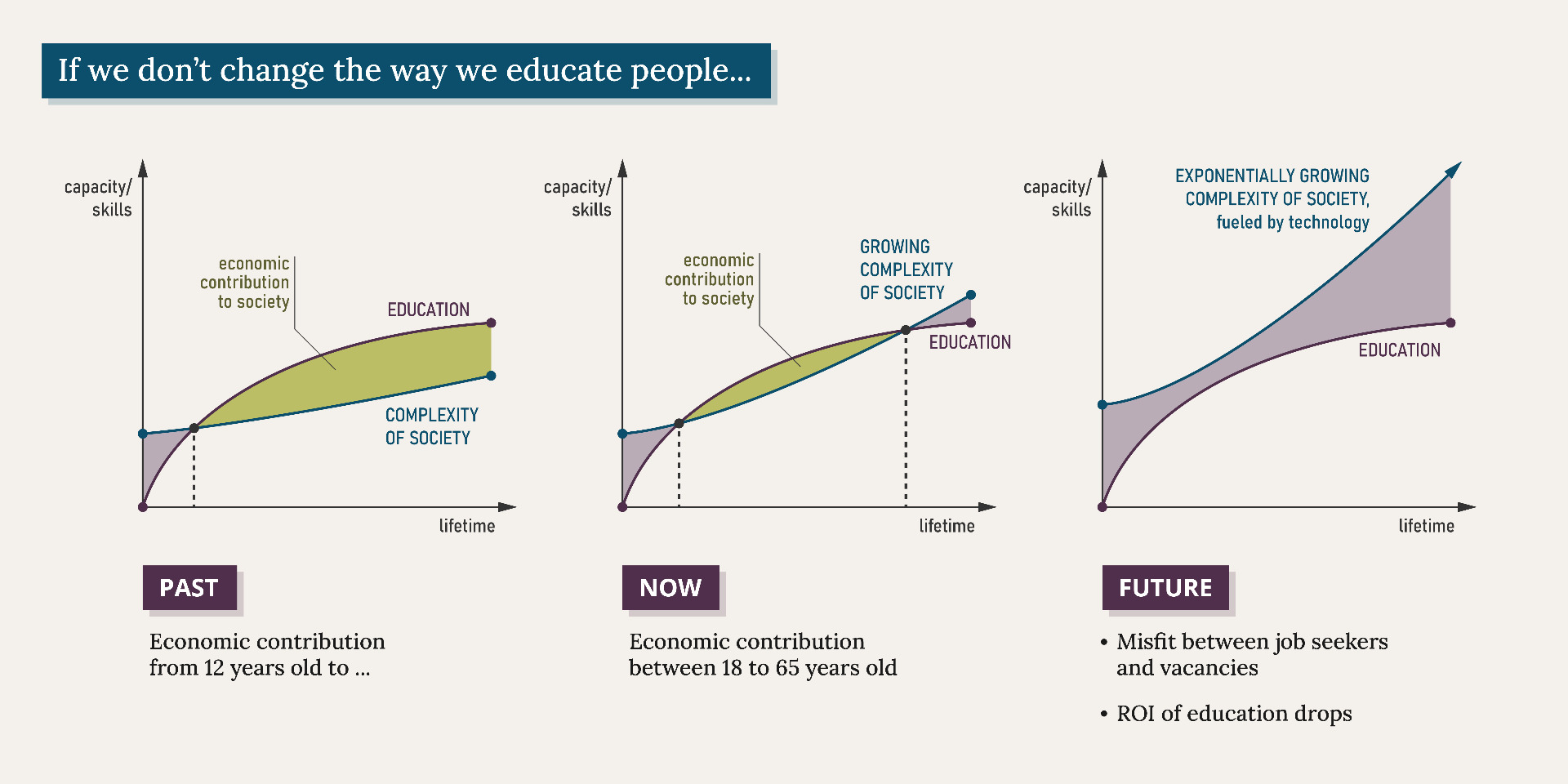The global shutdown in response to the pandemic shook educational systems at all levels. We need to reflect on what is actually most needed from these institutions now and in the future.
According to the World Economic Forum, 65% of the current six-year-olds will later have a job that does not exist today. With what kind of education are we preparing these young people, for a job market we can only envision in our minds? How do we know what kind of knowledge and what kind of skills will best serve them?
The rapid spread of everything from “fake news,” a novel coronavirus, and even the latest iPhone shows that globalization and innovation – hand in hand – are making our world smaller and faster. At the beginning of the twentieth century, radio took almost 40 years to reach 50 million users. The iPad achieved that same milestones century later in just 20 months. A study by McKinsey estimates that today change happens 10 times faster and at 300 times the scale compared to the Industrial Revolution. The complexities and challenges in our society are growing at an exponential rate.
And yes, education is adapting to these evolutions both in terms of organization and orientation. But that process is extremely slow. It takes – perhaps rightly so – a generation to talk through well-considered changes, build consensus, implement them, and then measure their impact. This process has not become much faster over the past decades.
Trying to keep up with exponential change by means of linear reform is swimming upstream. The reality right now is young people are compelled to follow increasingly lengthening curriculums to absorb less and less relevant knowledge and skills, that are only becoming obsolete ever faster. This creates an ever-declining return on investment for education. The trend towards lifelong learning and “continuing studies” is only a recognition of that reality.

According to the OECD and the World Bank, return-on-investment figures for education have hovered at 10% per added year of education, over the last few decades. While there is still a lot of added value in our educational investments today, we need to direct our attention to the important decisions we make about how to educate the next generation.
Education based on a “knowledge transfer approach” loses its usefulness and return if the half-life of that knowledge decreases every year.
So, what should we focus on? To best answer that question, we’d need a crystal ball to forecast what those 65% new jobs will look like in the middle of the century. There’s no exact answer, but we can make an informed prediction based on the fundamental trends that are reshaping our world.
One of these trends is the proliferation of artificial intelligence and related innovations like advanced automation, “smart” assistants like Siri and Alexa, self-propelled cars, and so on. Experts estimate that simulating the equivalent of a human brain in the order of magnitude of an “exaflop” costs calculations per second. That’s a billion times a billion, or a 1 with 18 zeros. The fastest supercomputer in the world has already passed this milestone.
For $1,000 – the price of an iPhone – consumers today can buy a chip that’s 10,000 times slower. That may seem like a big difference, but at this rate by 2045, the iPhone in one’s pocket will be smarter than its owner. That is the time span in which a child who is being born now will end up in the labor market.
“Smarter” is, of course, a relative term. We can hardly imagine what kind of capabilities such a computer would have on a human level. But it’s not crazy to imagine that it would perform better than us in many areas, even on tasks that would require higher education. What if every one of us has a whole think tank working 24 hours a day to tackle any problem? With such capacity at our disposal, any one of us would be able to do mountains of work while taking a nap. Consider an architect asking his iPhone to design the ten most optimal plans for a specific building site, given all the conditions and preferences of the client, respecting the architect’s mood board, as well as the applicable urban planning regulations.
If we already see automation and robots crowding out jobs, the next few decades will see the disappearance of highly skilled jobs. Our children’s job roles will transform, tasked with the control of all this capacity. The essential skills to master will be to ask the right questions, to deal with conflicting interests and scarce resources, to clearly define a desired goal to achieve, to have a vision, and, above all, to use this capacity ethically and consciously. Leadership, in short.
If it takes a generation to transform an educational system, we must now ask ourselves how we can give much more attention to skills such as leadership, entrepreneurship, creativity, ethics, well-being, collaboration, communication, and empathy.
The good news is that this tackles multiple challenges at once. Not only do we prepare students for the future, but we can also offer them skills with lifelong added value that are not subject to the half-life problem. And in the end, we also arm them to better cope with exponential change, by steering it rather than undergoing it.

